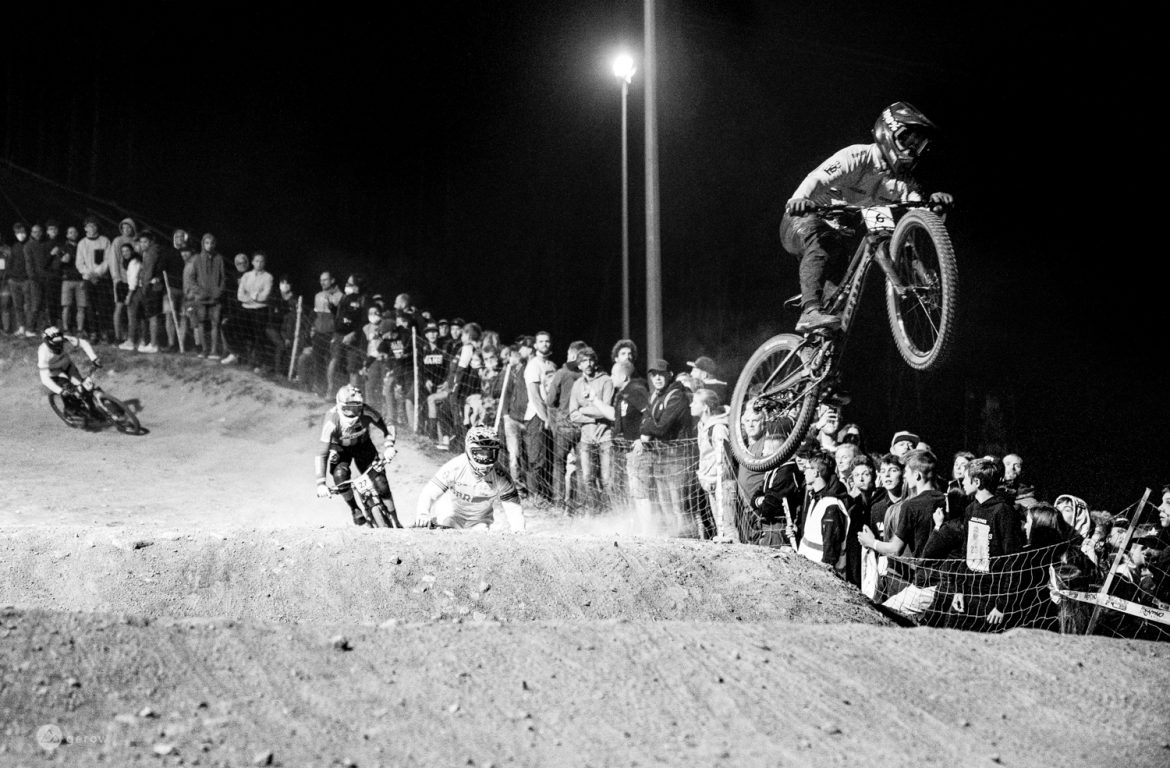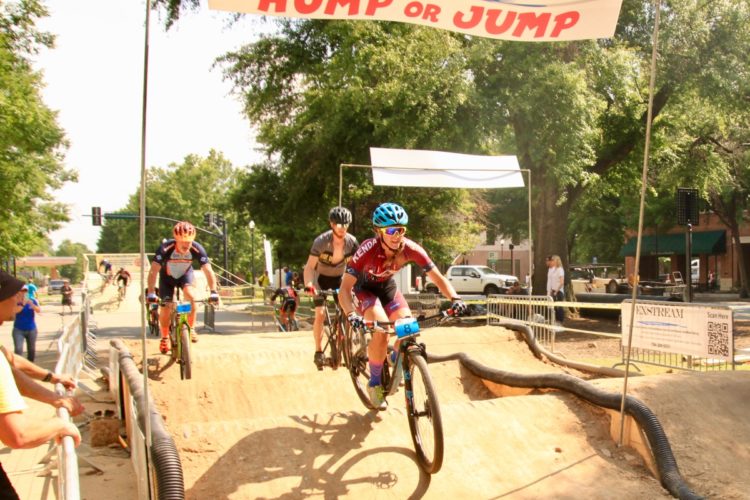While many of our faithful readers have a deep knowledge of dirt racing culture, the differences between mountain bike racing genres can take some time to digest. How does an XC race differ from a marathon? A friend who prefers to hike instead of riding trails recently asked me about the differences between all of the competition types. She described her idea of mountain bike racing, including “lots of beer drinking and muddy sections where you have to carry the bike.” It clicked that what she had watched was a cyclocross race, which some folks would argue is not mountain biking. As I was describing some of the genres it occurred to me how confusing the delineations might be.
Based on that curious friend’s question and the fact that our sport has recently welcomed a herd of new enthusiasts, it makes sense to lay out some differences between race genres. Hopefully, you can send this article to friends who have similar questions or who are looking for the next MTB competition to try out.
Endurance racing genres

Let’s get into this where the heavy breathing happens: mass-start trail racing. Similar to running races, a traditional cross-country MTB event starts off with a bang, and all of the contestants vie for the front position together over a 20- to 30-mile-long course. The terrain is often a mix of fire roads and tricky singletrack, and there can be an equal amount of climbing and descending. All of that uphill requires lightweight bikes and humans, and XC racers often have to count their calories while running minimal tire tread and suspension travel to keep the grams low. Like road cyclists, many XC professionals train between 15 and 25 hours per week, and spend the rest of their time sleeping and stretching.
XC Olympic (XCO)
The original cross-country bike races used long loops, sometimes with a single 30-40 mile lap. The modern version, commonly called XCO, has shifted the sport to a much more spectator-friendly format. World Cup XC races now use a shorter circuit where fans and television cameras can catch most of the action over the course of roughly 90 minutes of racing. At the top level, there is a two-way pit where racers can stop for repairs to their bikes or to exchange water bottles, similar to the pits in a cyclocross race. The courses are increasingly difficult to ride, often seeing riders at the back of the pack getting off and walking or riding around the more challenging trail features.
Short Track (XCC)
Shorter loops with closer to twenty minutes of race time fall under the “short track XC” umbrella that’s currently being used to seed startline positions for the longer XC World Cup events. These faster bursts of speed favor a different sort of rider, and the World Cup podium contenders typically ride fast enough to secure a good position on the start-grid the following day while saving most of their matches for the following event.
Eliminator (XCE)
Before short track took over, World Cup XC start positions were determined by an even shorter race the day prior, which was called an “eliminator.” The promoters would take a portion of trail, typically paired with a road segment, that riders would sprint on for roughly one minute at full throttle. Four riders would go off at a time, and the first two across the line would advance to the next round. Eliminator specialists typically had large leg muscles, looking more like a track cyclist than a mountain biker. Today eliminator races follow a slightly different format and the World Cup eliminator series is separate from the XCC and XCO events.
Marathon (XCM), ultra-endurance, and stage racing
The long-lap courses that XC started with are now called “marathons,” and they can go on for days. A typical marathon course rolls through 50+ miles of trails and dirt roads with plenty of 100-mile routes to choose from for folks who can train that much. Cross country stage races include consecutive days of pedaling these long courses, typically without repeating any of the tracks. The events can move through the forest in a point-to-point fashion where promoters set up a base came every day, or they can use a central camp and send riders out and back in various directions. Stage races tend to be infused with loads of fun and camaraderie since the athletes get to hang out together before and after each stage. Ultra endurance races are typically 100 miles long.
Cyclocross
That aforementioned cyclocross genre is a form of dirt racing that was created by European road cyclists as a means of fun training during the winter months. The courses are similar to modern XCO in length, though they are less technical with far less climbing and descending involved. Course designers can get creative with the race tape, forcing riders over barriers and through sand and mud bogs that are so thick they require the athletes to dismount and run. Cyclocross races last for 45-60 minutes, and the rider’s aerobic intensity is fully maxed out during those laps. A ‘cross race with no necessary dismounts is basically a short track race on a different bike. Amateur races can often be done on a mountain bike, but elite-level events require a 33mm maximum tire width along with several other mechanical regulations. The bikes are notably similar to modern gravel machines, though with shorter wheelbases and steeper head tubes for tighter handling and more mud clearance. Oh, and the tradition of beer drinking along the course and occasionally between the tape is strong.
Gravity racing genres

There’s plenty of deep breathing in gravity racing as well, though most of those gasps come from anaerobic sprints and muscle fatigue. As the name suggests, genres under the gravity umbrella primarily use the trail slope to maintain momentum instead of relying on pedaling force. The bikes are sturdier across the board, built for hitting objects harder and landing taller jumps. Most riders also keep a more stout body build, as muscle mass helps catch and shift their weight over rough terrain.
Downhill (DH)
Downhill racing is the original gravity party, where the athletes are timed as they ride from the top to the bottom of a trail that’s taped with plastic ribbons. Modern courses are roughly four minutes long for the fast kids, with some of the sport’s most technically challenging sections and longest jumps scattered throughout. The appropriate bikes aren’t designed to be pedaled uphill, so DH riding and racing typically happens at ski resorts with quick gondola service to the trailhead. Most DH trails are nearly impossible to ride at speed on shorter-travel bikes, and the toughest courses like Black Snake in Val di Sole, Italy, are outside the comfort zone of many a talented mountain biker.
DH bikes and components are designed to withstand consecutive impacts and harsh landings and, as a result, they tip the scale at two to three times that of a feathery XC machine. Most people race DH with a 200mm dual-crown fork that has a second arch above the frame’s steer tube for added stiffness, followed by 200mm of rear-wheel travel. Gravity tires need to be as sturdy and sticky as possible to hold up through multiple runs, and they achieve this with dual protection-layers and supper gummy outer tread to find maximum grip while preventing flat tires.
Athletes race alone against a clock for most gravity genres, leaving them to choose any line on the track they feel will be fastest. The Megavalanche is an exception, with a mass start on snow that rolls into a rocky fire road shortly after and eventually funnels into singletrack. It’s fundamentally similar to a standard DH race, apart from the start, the intermittent climbs, and the fact that the descent is around an hour in length. Folks race it on all sorts of gravity bikes, but something that can be pedaled is preferred.
Enduro
If you ride a bike with more than 120mm of travel there is a good chance its geometry and components were greatly affected by the advent of enduro racing. In enduro, riders pedal or take chairlifts to the top of downhill tracks, and are then timed on the descent. It’s essentially a series of 3-5 DH runs with a pedal in between. The climb, called a liaison or transfer, is not included in the overall race time, but riders do have to be fit enough to get to the top in time for their start. If they arrive late there may be a penalty that adds time to their accumulated race minutes. Enduro descents range from a few minutes to full-on twenty-minute-long rips down the slope, and the terrain is often similar to what riders see in a DH race—though there are rarely mandatory jumps. Check out our article on the history of enduro racing for a deep dive down hill.
Enduro and downhill racing have pushed component and frame development to a new level, forcing engineers to design tougher gear that lasts longer. Enduro racers have to ride the same bike through multiple runs in a day, and some races span several days or a whole week. In an Enduro World Series race the athletes are allowed some technical assistance once during the day, but if something goes wrong outside that brief window the riders have to deal with it themselves. If athletes change certain things like the fork, frame, or rims they will receive a time penalty, so those bits have to be notably durable. The work that’s gone into making those parts light enough to pedal while tough enough to endure is something every mountain biker now benefits from.
Super D
Another short-lived race genre called Super-D was popular in the US at the same time that enduro was exploding across the European continent. The race is similar to a downhill event, but the courses were longer and there was always at least one heinous climb in the middle. It was popular among downhill and XC racers alike, and competitors wore a mix of baggies and lycra, kneepads and not, half-shell and fullface helmets. A few Super-D shreds do still run, and when they happen in tandem with a cross country race the combined-timed event is called an “All-Mountain” race. One of the few remaining examples of this is the Downieville Cycling Classic in northern California. It’s a sweet party with some prime swimming holes at the end of the trail. Check out our interview with Super-D pro Kelli Emmett for more on the former gravity genre.
Dual slalom and four-cross
Dual slalom and four-cross are two gravity genre that a lot of folks love to watch and, for no good reason, they’re not as common as other descending games. Dual slalom is a two person race where the riders flow side by side on identical tracks, pumping berms toward the finish line. It requires a great deal of cornering confidence and skill to execute well, and riders who are really good at it are often on the top step of other race podiums. Four-cross (also written as 4X) is essentially a gravity-fed BMX race where riders use short travel full suspension or hardtail bikes to launch out of berms and over huge gap jumps to the finish line below. The four riders on track race for the top two spots, and advance through a bracket system to the final heats. Both of these races lasts less than a minute, making every tap of the brakes and turn transition critical.
Other competatitive genres
One timed competition that falls outside the endurance and gravity banners is pump track racing. Pumping hard and fast requires heaps of strength and endurance, and there is gravity involved, but none of those factors truly defines the sport. Pump track riding is all about having great bike/body separation, a masterful understanding of how to create inertia and flow, and the guts to never touch the single rear brake lever.
Slopestyle, trials, and freeride
There are several other genre of mountain bike competition where clocks are not the judge of anything. Slope style, trials, and all manner of jump competitions are scored more like gymnastics. Judges assess an athlete’s skill and comfort in the sport to determine the winner. Rampage and and many of the events at Crankworx are prime examples of this sort of competition.
Woof, that’s a lot of mountain bike competing, and we didn’t even get into orienteering, singlespeed races, 24 hour racing, or X-terra. Riders who want to test themselves against other athletes, or the unforgiving clock, have all the options they could want. The rest of us benefit from the innovations that help to make those racers faster and more efficient.
Do you have a favorite MTB race style? Please share it with us in the comments below.














